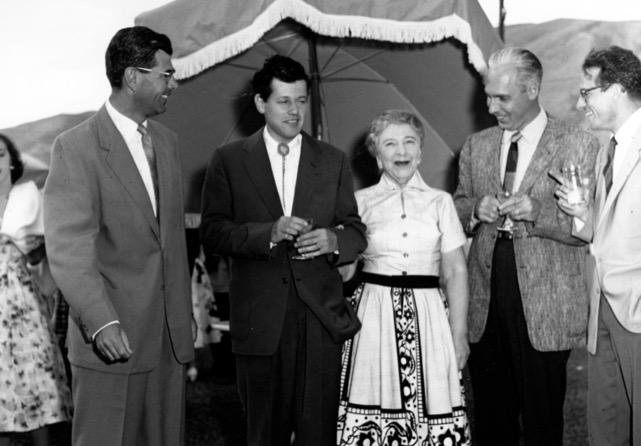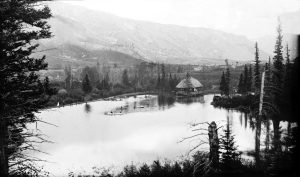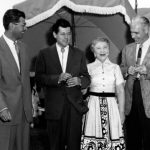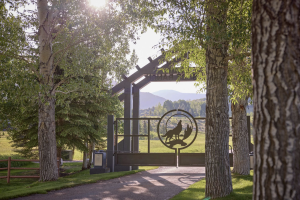Willoughby: Juilliard String Quartet — mainstay of faculty and chamber music concerts for nearly two decades

Durrance Collection/Aspen Historical Society
The Juilliard String Quartet, as a performing group and as individuals, was a major audience draw at the Aspen Music Festival, and they were core faculty members as the festival developed and grew.
The quartet formed soon after composer Robert Schumann became the president of Juilliard in 1945. He established them as the Quartet in Residence. Its first appearance in Aspen was in 1956 with three of the original members: Robert Mann (violin); Robert Koff (2nd violin); and Raphael Hillyer (viola). Isidore Cohen replaced Koff in 1958. The cellist, Claus Adam, had just joined the group in 1956, but he had already been with the festival since 1953.
In those early years, there were two festival concerts each week (not including the student concerts): the symphony on Sundays and chamber music on Saturdays. Most summers, the quartet played at least half of the chamber concerts as a group but also for other concerts as members of trios and other arrangements with other festival faculty members/performers.
There were some summers when they had other engagements, like in 1961, when they toured Russia, where they were well-received. In 1965, the U.S. State Department engaged them to do a tour of Far Eastern counties: 35 concerts in 11 countries. They were appointed Quartet in Residence for the Library of Congress in 1961 doing many concerts, but also with that appointment, they were able to use the Library of Congress collection of Stradivarius instruments.
I had two categories of interactions with them, many were when I was on the tent crew during the ’60s and ’70s. Watching and listening to their rehearsals, both during and after, you could easily recognize that even though they had been together for over ten years, they had a special camaraderie that made being in a quartet work. Students comprised at least a third of the audience for the performances; what they missed from the rehearsals was the perfectionism of each of the members and they way they co-equally discussed each modification of even just a few notes.
The other interaction was with Claus Adam beginning when I was very young. Often, in the summers, when I would drop in with my aunt and uncle, John and Frances Herron, Claus and his wife Elenor would be there.
They first came to Aspen in 1953 when he was with the New Music String Quartet. Elenor was pregnant and, upon arriving, was close to giving birth. At the time, most pregnant mothers were told not to have babies in Aspen — the combination of high altitude and no-so-great medical facilities. Claus took her to Denver and went back and forth to Aspen until their daughter was born.
They came back in 1954 with the same quartet, but Adam joined the Juilliard String Quartet in 1955, and they did a summer tour of Europe; they returned in 1956.
One reason my aunt and uncle were often hosting them for social time was that my uncle was one of the founding board members of the Music Associates of Aspen. Adam became one of the faculty members on the board in 1958. However, I don’t remember any discussions about the MAA. They enjoyed summers in Aspen, seeing the town and the Aspen Music Festival grow and getting out of the New York grind.
Even though they had traveled the world, Claus and Elenor continued to come to Aspen even after he stopped performing. He and the other Juilliard members taught scores of students, helped develop string quartets, and headlined various events about composers (Claus was a composer, too) and the finer points of music.
Tim Willoughby’s family story parallels Aspen’s. He began sharing folklore while teaching at Aspen Country Day School and Colorado Mountain College. Now a tourist in his native town, he views it with historical perspective. Reach him at redmtn2@comcast.net.
Back in Time | Aspen
Hagal, the king of the air and American Blondin, will give a high wire and trapeze performance at Hallam Lakes, on Sunday, Aug. 12, at 2:30 p.m.,” the Aspen Daily Times announced on Aug. 11, 1888.









